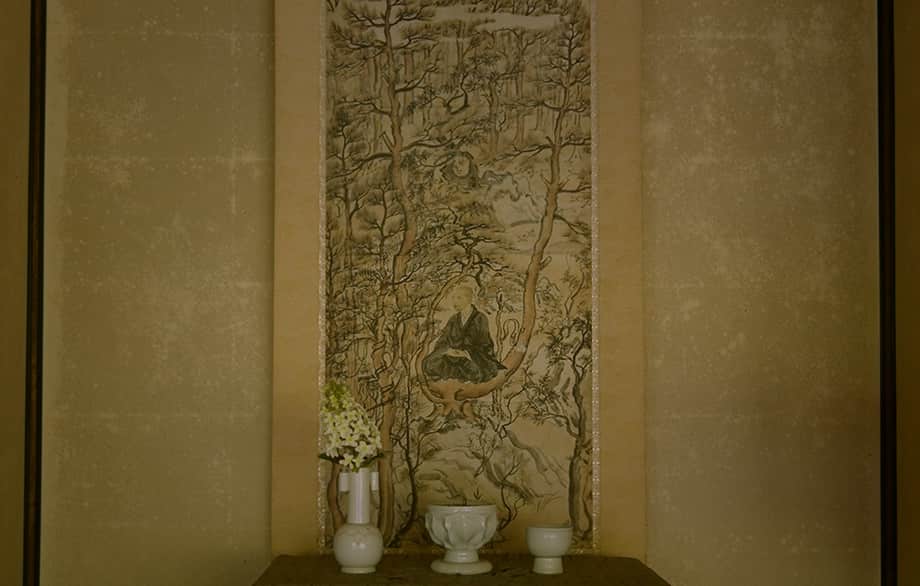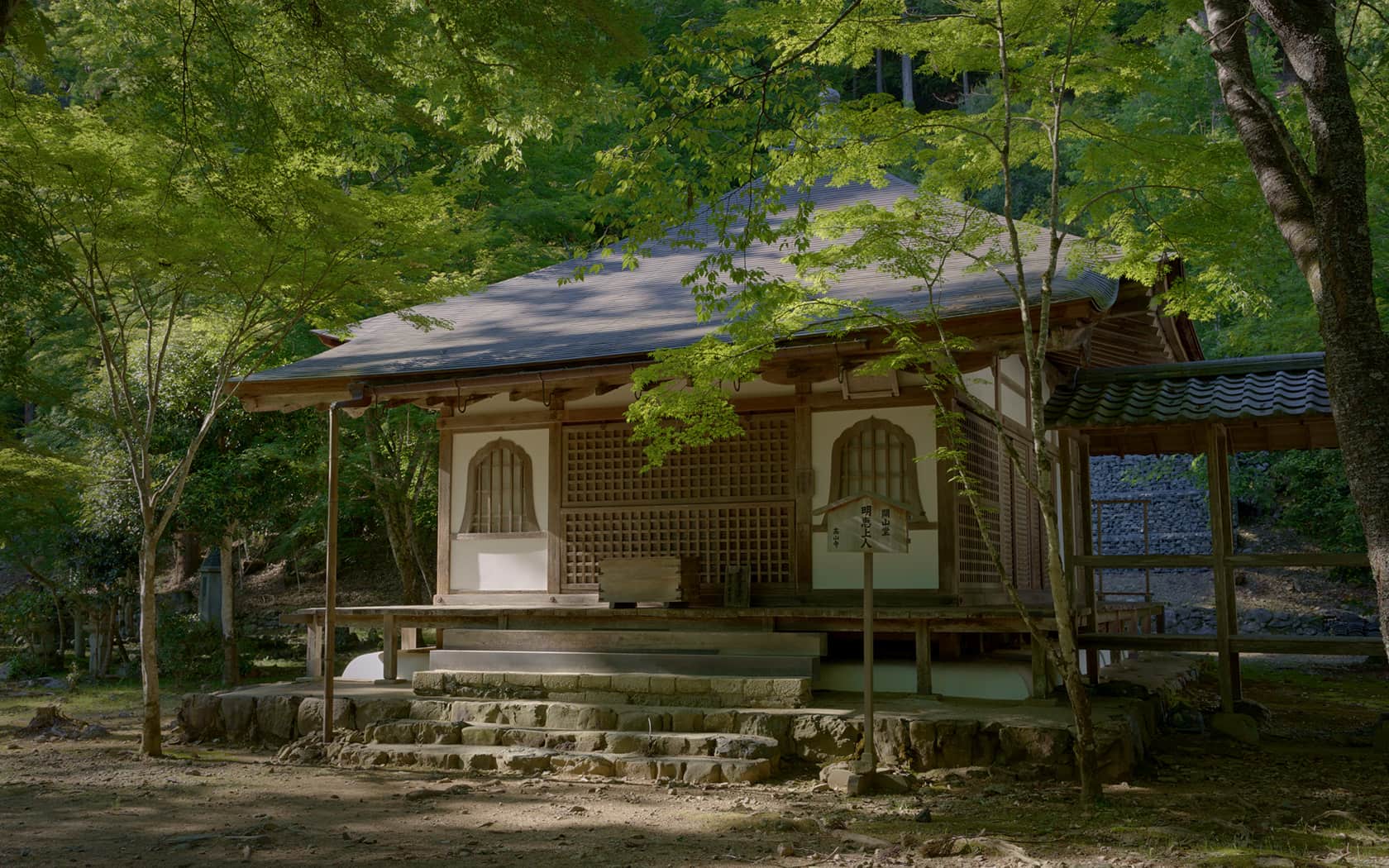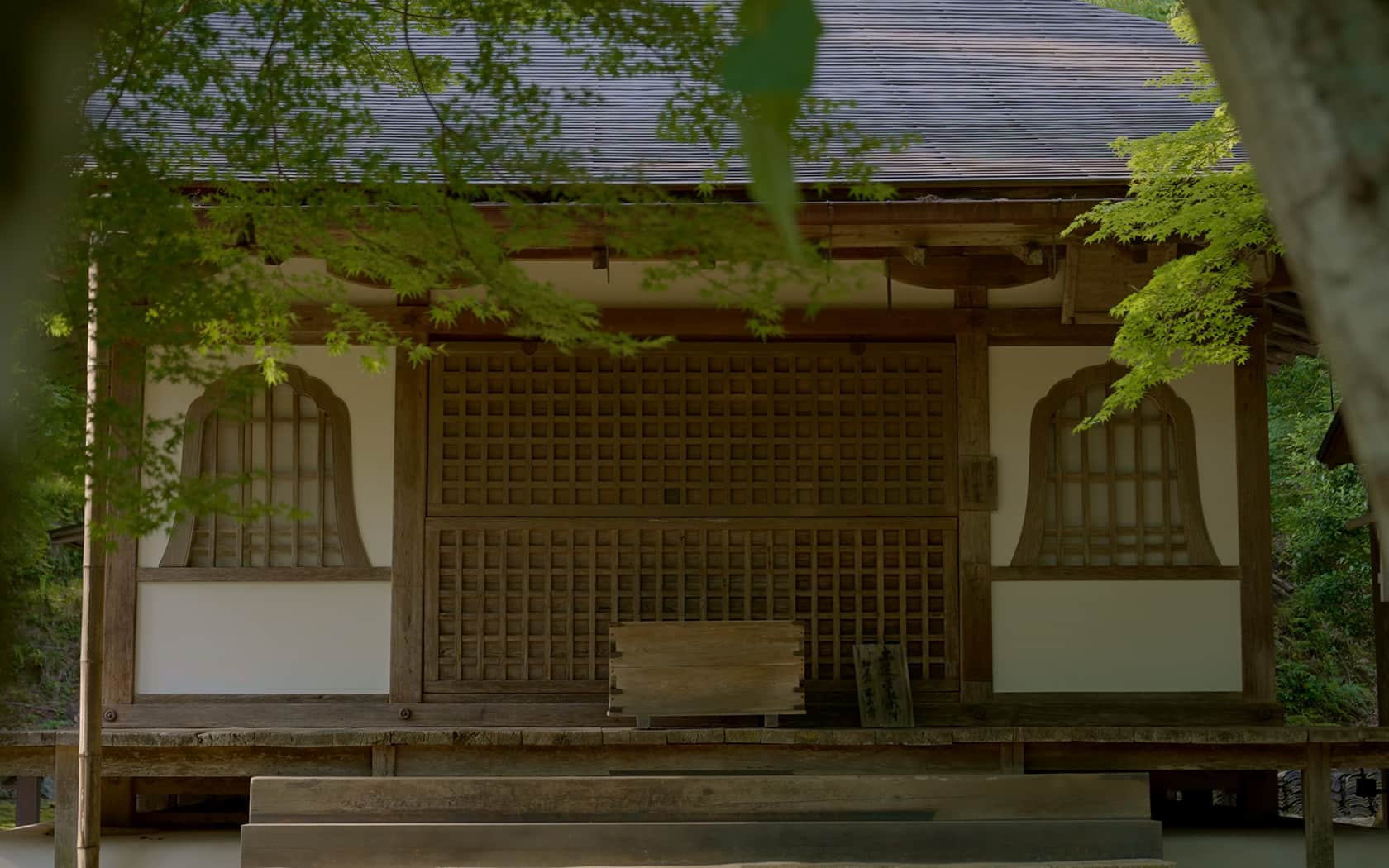The Kaisando, or Founder’s Hall, is built on the site of Zendoin, where Kosanji’s founder Myoe (1173–1232) spent his final years and died. The building burned down in the Muromachi period (1336–1573) and was later rebuilt in the Edo period (1603–1867). The Kaisando enshrines a seated wooden statue of Myoe holding prayer beads. This work was originally kept in a passage connecting Zendoin with a 13-story pagoda that was built following Myoe’s death. Buddhist memorial services are held here each year on January 19, the date when Myoe died.
Zendoin
This structure, where Myoe (1173–1232) spent his final years and passed away, was once located at Kosan-ji Temple.

Myoe
Born in 1173 in present-day Yuasa, Aridagawa Town, Wakayama Prefecture, Myoe was a Buddhist monk known for rejuvenating the Huayan sect of Buddhism. After becoming a priest under Mongaku at Jingoji Temple, he studied Kegon Buddhism at Todaiji Temple and received the secret teachings from Konen at Kajuji Temple. He was awarded the land of Togano by Retired Emperor Gotoba in 1206 and built Kosanji Temple as the center of the Huayan sect. He died in 1232.
Muromachi period
The period when the Ashikaga clan took power and founded the shogunate in Muromachi, Kyoto. It refers to approximately 180 years from 1392 when the Northern Imperial Court and Southern Imperial Court united until 1573 when Yoshiaki, the 15th Shogun was defeated by Oda Nobunaga. The late Muromachi period that came after the Coup of Meio (1493) is also called the Sengoku (Warring States) period. Some historians include the Northern and Southern Courts period (1336–1392) with the early Muromachi period.
Edo period
The name of the period that lasted approximately 260 years from when Tokugawa Ieyasu founded the Edo shogunate in 1603 after winning the Battle of Sekigahara in 1600 until the restoration of imperial rule by Tokugawa Yoshinobu in 1867. Also called the Tokugawa period.






